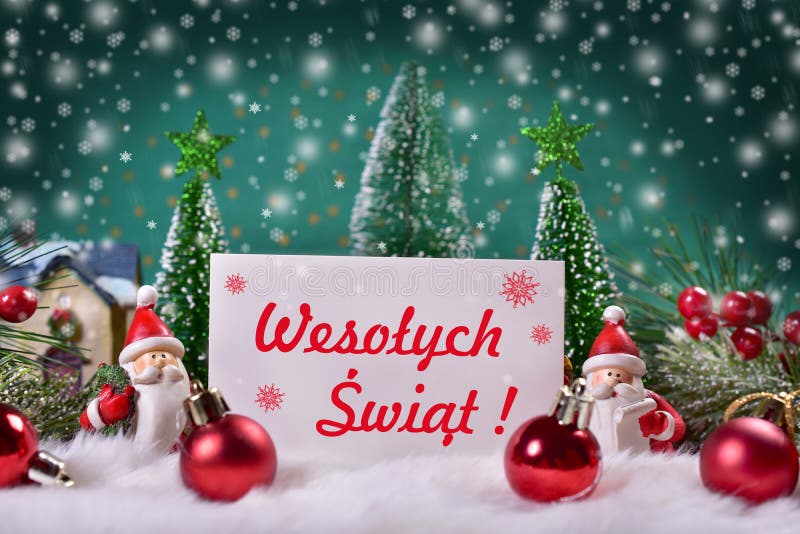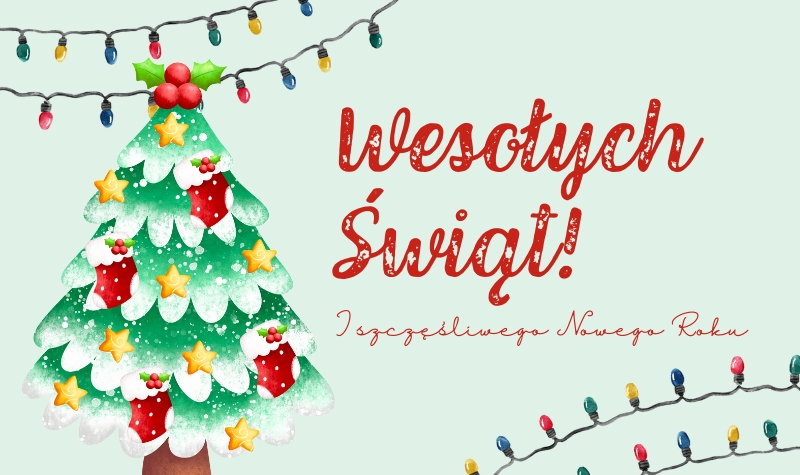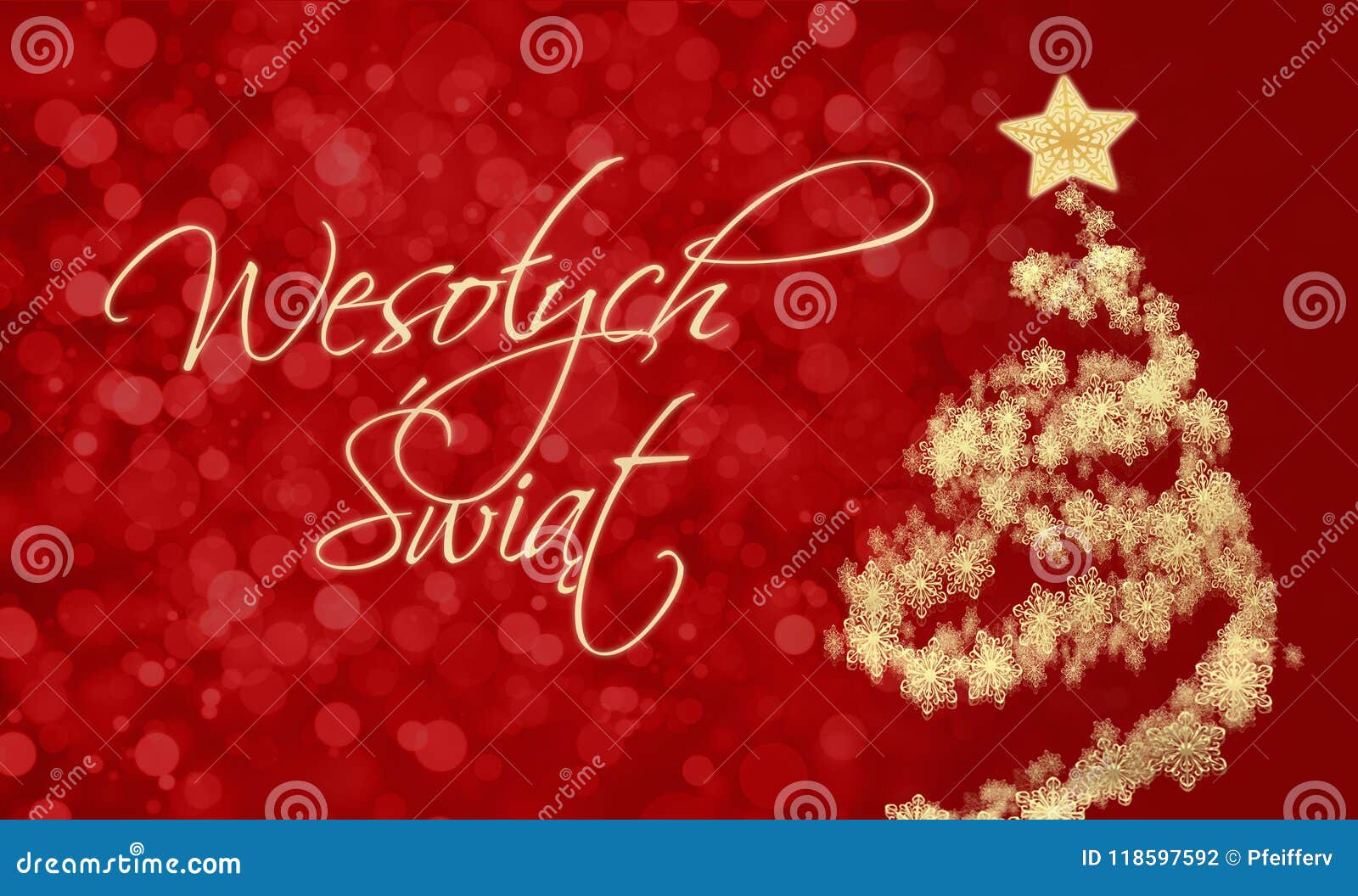Merry Christmas in Polish language, known as “Wesołych Świąt Bożego Narodzenia”, carries a unique charm and cultural significance. This article delves into the fascinating world of Polish Christmas traditions, greetings, and the importance of the Polish language in preserving these cherished customs.
From the heartwarming Christmas Eve dinner known as Wigilia to the melodious carols that fill the air, we explore the diverse regional traditions that make Polish Christmas celebrations truly special.
Introduction to Polish Language

The Polish language is a West Slavic language spoken by over 40 million people worldwide, primarily in Poland. It is the official language of Poland and is also spoken in neighboring countries such as Lithuania, Belarus, Ukraine, and the Czech Republic.
Polish has a rich history, dating back to the 10th century. It is a descendant of the Proto-Slavic language, which was spoken by the Slavic tribes that inhabited Central and Eastern Europe. Over the centuries, Polish has been influenced by various languages, including Latin, German, and French.
Polish Alphabet and Pronunciation
The Polish alphabet consists of 32 letters, including 9 vowels and 23 consonants. The pronunciation of Polish can be challenging for non-native speakers, as it features several unique sounds, such as the nasal vowels ą and ę.
Popularity of Polish
Polish is the native language of over 38 million people in Poland. It is also spoken by significant minorities in other countries, including the United States, the United Kingdom, and Canada. Polish is a popular second language in many parts of Eastern Europe, and it is also taught in universities around the world.
Merry Christmas in Polish Language
The Polish language offers a unique and beautiful way to express the joy and spirit of Christmas. Let’s delve into the Polish translation of “Merry Christmas,” its pronunciation, and explore the cultural significance and traditions associated with this joyous occasion in Poland.
Translation and Pronunciation
In Polish, “Merry Christmas” is translated as “Wesołych Świąt Bożego Narodzenia.” Pronounce it as “Veh-soh-wuh Shvyont Bwhuh-zheh-goh Nah-roh-dzeh-nyah.”
Cultural Significance
Christmas holds a profound significance in Polish culture, deeply rooted in religious traditions and family gatherings. It is a time for reflection, celebration, and sharing the warmth of the season with loved ones.
Traditional Greetings and Customs
Polish Christmas greetings often extend beyond the simple “Wesołych Świąt.” Here are some traditional expressions and customs:
- Kolędowanie:The tradition of singing Christmas carols, known as “kolędy,” fills the streets and homes with festive cheer.
- Wigilia:On Christmas Eve, families gather for a special dinner called “Wigilia.” The table is set with an extra plate for an unexpected guest, symbolizing hospitality and welcoming those in need.
- Opłatek:During Wigilia, families share a thin wafer bread called “opłatek,” a symbol of unity and reconciliation.
Examples of Christmas Greetings in Polish

Exchanging Christmas greetings is a beloved tradition in Poland. Here are some of the most common Polish Christmas greetings, along with their English translations and phonetic pronunciations:
| Polish Greeting | English Translation | Phonetic Pronunciation |
|---|---|---|
| Wesołych Świąt! | Merry Christmas! | veh-soh-wih shvyont |
| Zdrowych i pogodnych Świąt Bożego Narodzenia! | Merry and peaceful Christmas! | zdrow-ih ee poh-god-nih shvyont boh-zheh-goh nah-roh-dzeh-nyah |
| Niech magiczna moc wigilijnej nocy przyniesie Ci radość i spełnienie marzeń. | May the magic of Christmas Eve bring you joy and fulfillment of your dreams. | neh-eh mah-gich-nah moh-tsih vee-gee-lee-eh-ney noh-tsih pshee-nyeh-sheh tsee rah-dost ee shpeh-wneh-nyeh mah-shen |
| Z okazji Świąt Bożego Narodzenia życzę Ci wszystkiego, co najlepsze. | On the occasion of Christmas, I wish you all the best. | z oh-kah-zii shvyont boh-zheh-goh nah-roh-dzeh-nyah zhih-cheh tsee vshis-tkeh-goh, coh nah-ee-lep-sheh |
| Spokojnych i rodzinnych Świąt. | Peaceful and family-filled Christmas. | spoh-koy-nih ee roh-dzee-nih shvyont |
These greetings can be used in a variety of situations, such as:
- When meeting friends or family during the Christmas season
- In Christmas cards or letters
- On social media posts
Cultural Traditions Related to Christmas in Poland
Christmas in Poland is a time of great celebration and tradition. From the traditional Christmas Eve dinner to the popular Christmas carols, there are many unique customs that make Christmas in Poland a special time of year.
Traditional Polish Christmas Eve Dinner (Wigilia)
The traditional Polish Christmas Eve dinner, known as Wigilia, is one of the most important parts of the Christmas celebration. The dinner is usually meatless and consists of 12 dishes, representing the 12 apostles. Some of the most popular dishes served at Wigilia include borscht, pierogi, and kutia.
Significance of the “Opłatek” Wafer
The “opłatek” wafer is a thin, unleavened wafer that is shared among family and friends at the beginning of Wigilia. The wafer is a symbol of peace and unity, and it is often used to exchange Christmas greetings.
Popular Polish Christmas Carols
Polish Christmas carols, known as “kolędy,” are an important part of the Christmas tradition. Kolędy are typically sung at Wigilia and at other Christmas gatherings. Some of the most popular kolędy include “Cicha noc” (Silent Night), “Bóg się rodzi” (God is Born), and “Przybieżeli do Betlejem” (They Came to Bethlehem).
Regional Variations in Polish Christmas Traditions

Poland’s diverse cultural landscape is reflected in the myriad of Christmas traditions observed throughout its regions. These variations stem from a combination of geography, history, and cultural influences.
In the southern region of Podhale, for instance, the influence of neighboring Slovakia is evident in the “szopka” tradition. Elaborate nativity scenes, often featuring moving figurines and live animals, are constructed and displayed in homes and churches.
Central Poland
In central Poland, the tradition of “gwiazdkowanie” prevails. Children dressed as carolers carry a large star adorned with ribbons and bells, visiting homes to sing Christmas songs and collect treats.
Eastern Poland, Merry christmas in polish language
Eastern Poland, influenced by Orthodox Christianity, celebrates Christmas on January 7th. The “wieczór wigilijny” (Christmas Eve dinner) features a 12-course meal, each dish representing a different apostle.
Western Poland
In western Poland, the “jasełka” tradition takes center stage. These live nativity plays, often performed by children, depict the birth of Jesus and are a beloved part of Christmas celebrations.
Conclusion
In conclusion, the Polish language plays a vital role in preserving and celebrating the rich traditions of Christmas in Poland. From the heartfelt greetings to the cherished carols, the Polish language weaves together a tapestry of cultural heritage that connects generations.
By embracing the Polish language, we gain a deeper understanding of the customs, beliefs, and values that shape this beloved holiday. It is an invitation to explore the vibrant tapestry of Polish Christmas culture, where the spirit of tradition and the warmth of family intertwine.
Last Point
As we conclude our exploration of merry Christmas in Polish language, it becomes evident that the Polish language is not merely a means of communication but a vessel that carries the rich tapestry of Polish Christmas traditions.
May this article inspire you to embrace the beauty and diversity of Polish Christmas culture and appreciate the enduring role of language in shaping our most cherished holiday experiences.
Essential FAQs
What is the Polish translation of “Merry Christmas”?
Wesołych Świąt Bożego Narodzenia
What is the significance of the “opłatek” wafer in Polish Christmas traditions?
The opłatek is a thin, unleavened wafer that is shared among family members on Christmas Eve. It symbolizes unity, forgiveness, and the sharing of good wishes.
What are some popular Polish Christmas carols?
Some popular Polish Christmas carols include “Cicha noc” (“Silent Night”), “Lulajże Jezuniu” (“Lullaby, Little Jesus”), and “Przybieżeli do Betlejem” (“Shepherds Ran to Bethlehem”).